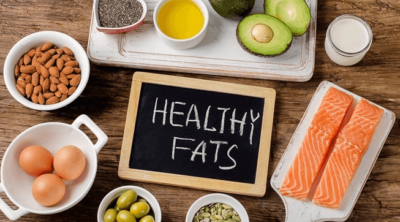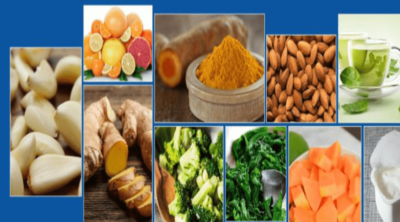
For a high protein diet, you may need to supplement your protein intake. Protein supplement foods come in bar or shake form. An endless debate in nutrition circles is which form is better. If you need help making up your mind, on which is a better food for you, scroll below.
While exercising for weight gain or loss, maintaining a proper diet is necessary. So you have to devise a meal plan, make the correct foods, eat at the right time.. etc, etc. All well and good but how feasible is it for you to cook the right meals, with the correct nutrient content and to eat at the correct time, post or pre-workout? Unless you are an excellent juggler with a lot of time on your hands, very difficult. Enter the meal replacement!
Both protein bars and shakes are meant as meal replacements or dietary supplements for weight or muscle gain. Their difference from other meal replacement foods is that they have a high protein content. For bodybuilders or people looking to build muscles, high protein intake is essential and a quick and convenient way to intake the necessary amount, is through such bars or shakes. The correct amount of good quality proteins, low carbs and fats along with some vitamins and minerals are the necessary nutritional factors of protein shakes and bars. In this article, learn the difference between the 2 forms of protein supplements in our protein shakes vs protein bars debate.
Protein Bars Vs Protein Shakes
To really decide which is a better choice, protein bars or protein shakes, here are some factors to think about :
✪ Preparation
There’s really nothing to “prepare” with a protein bar. It’s a ready-made bar, just unwrap it and eat it. Protein shakes come in 2 main forms, RTD (ready-to-drink) or powder form. The RTD form again requires no preparation. It’s either a can or tetra pack. Open, pour and enjoy. But in powder form, protein shakes need to be blended or mixed well with either water or milk to prepare a thick shake. By the way, mix well means mix the powder completely into the liquid for at least 30 seconds, so that they bind together. If not mixed properly, the powder can form little lumps and float in your shake. Little dry lumps and pieces of such powders do not go down well.
✪ Cost and Convenience
Protein bars come in different package sizes, common ones being 6 or 12 pack or 1 large bar. The average price range is between $20 – $50 for a pack of 6 bars. Prices are subjective to brand and number of bars in a pack. Since protein shakes come in 2 forms, cost can vary a lot. The RTD shakes are slightly costlier, being pre-mixed. An individual can cost at least $3, while a carton or bottle of 12 or 6 drinks will cost above $35. In powder form, container size and brand play a key role. The most average of powders will cost at least $40 and above but the container size is good for long-term use. So spending that much money initially, ensures a steady supply of protein shakes.
Ultimately the whole idea behind such protein supplements is convenience. Here protein bars win hands down. Can you mix or blend your shake everywhere? Highly unlikely, unless it is pre-mixed. And even in RTD form, you have to carry cans or tetra packs around adding to your backpack’s weight. A protein bar on the other hand, is portable and light. It’s also spill-free and mess-free. For quick and easy snacking on the go, choose a protein bar. At home with leisure, blend and prepare a protein shake.
✪ Taste and Flavor
Now taste is one confusing factor in the protein bars vs protein shakes dilemma. Taste is highly subjective, different individuals have different preferences. Some feel the thick, slurpy feeling of a shake fills the stomach and gives the impression of eating real food. Others like the chewy and crunchy bite into a bar and also like pretending it’s a Hershey’s bar instead of a protein one. The bottom line is liquids are absorbed much faster by the body. So a protein shake is an easier source for your body to absorb and digest. Also bars can get very dry and granular from time to time, making you feel as if you are eating a wooden slab with nails. Another rule of thumb with protein bars is the better it tastes, the more the sugar, a definite no-no in your protein meal plan.
✪ Nutritional Content
The whole purpose behind eating protein supplements is the high protein content. Below is a comparison of some brands of protein shakes and bars, based on their nutritional value.
| Name | Serving Size | Calories | Proteins | Fat | Sugar | Carbohydrates |
| Kellogg’s Special K Protein Meal Bar Honey Almond | 1 bar (45 g) | 180 | 10 g | 6 g | 12 g | 23 g |
| Herbalife Protein Bar Peanut Butter | 1 bar (40 g) | 150 | 12 g | 6 g | 1 g | 16 g |
| Pure Protein Bar | 1 bar (50 g) | 280 | 29 g | 6 g | 4 g | 29 g |
| Slim-Fast High Protein Shake Mix Creamy Vanilla | 1 serving | 190 | 15 g | 5 g | 13 g | 23 g |
| EAS Myoplex Lite Powder | 1 serving | 190 | 25 g | 1.5 g | 2 g | 20 g |
| CytoSport Muscle Milk Protein Shake | 14 fl oz | 240 | 25 g | 9 g | 3 g | 14 g |
Protein and other nutrients vary in content levels in both protein shakes and bars. Read labeling and ingredients carefully to see whether the protein content is enough for your needs. For weight gain, high calorie levels are needed. Look out for the sugar and fat content. Some bars and shakes have a lot of sugar in addition to their protein content. Blend of different types of proteins like whey, milk and soy is another perk to look for in a protein bar or shake. Artificial additives and flavorings are ingredients to avoid.
So what’s the verdict in the protein bars vs protein shakes debate? Be careful with ingredients. Don’t eat just one type or brand of protein supplements, mix it up a little, to prevent boredom. And eat whole foods as well. Protein shakes or bars are not meant to completely replace regular eating.

